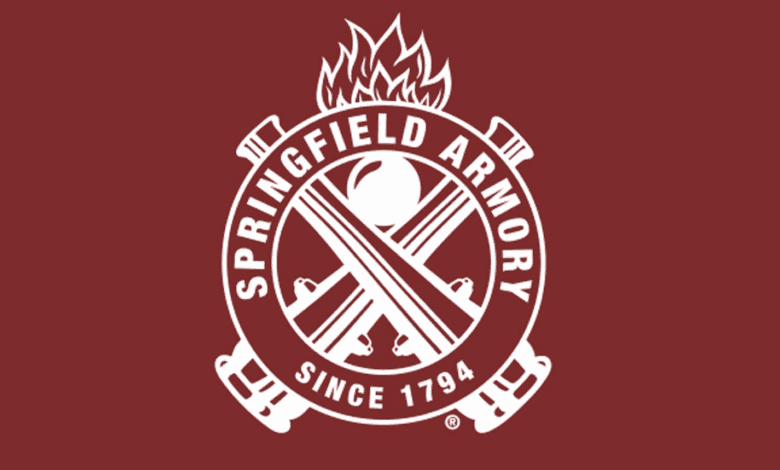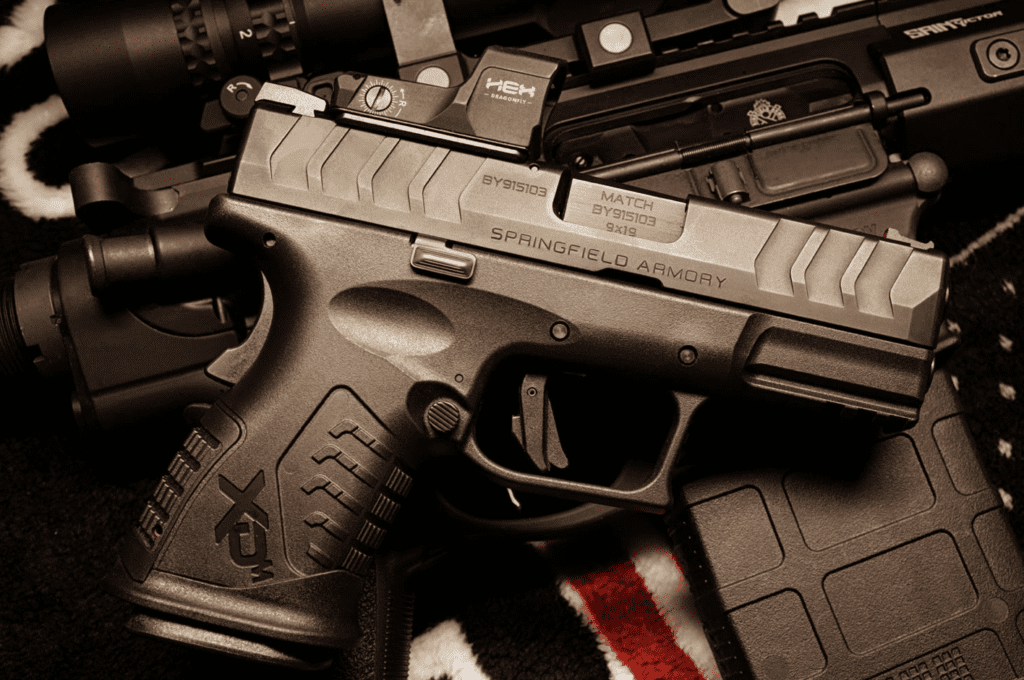
No, you did not miss anything in the latest The Simpsons episode. Springfield we will talk about is from our world and is very real. Moreover, Springfield is not only a town where it all began – it is a legacy carried through the centuries. The legacy of the first federal armory and one of the primary firearm manufacturers treasured by all gun appreciators. The legacy, continued by another valiant company that followed into the original armory footsteps. Those are indeed big shoes to fill, but modern Springfield Armory Inc. never fails to live up to its name.
It all began back in 1777 when Jorge Washington authorized the construction of the first federal armory in the town of Springfield, Massachusetts. Even though the settlement was small, it was endowed with several geographical advantages that made the place a fitting choice for an armory. Springfield stood at the intersection of three rivers, including the Connecticut River, and four major roads. Another factor that contributed to the town’s advantageous geographical position was the river waterfall located to the south of the settlement. The waterfall was too steep to be navigated by naval vessels, so Springfield was protected from seaborne assaults. Thus stood the Armory atop of the Springfield hill and shone like a beacon, illuminating the bright future that was to come.
At first, the Springfield Armory only stored weapons while manufacturing cartridges and gun carriages to assist the course of the Revolutionary War. When the war ended, the armory’s facilities continued to store weapons for future needs. By the mid-80-s, it became a primary ammunition and weapon arsenal. Such a position turned out to be the catalyst for another event that fate had planned for Springfield. During the Shays’ Rebellion of 1786-1787, American War Of Independence veteran Daniel Shays led an uprising to confront the Massachusetts government. High taxes and harsh economic conditions drove Shays, accompanied by other local leaders and about 1200 men, to attack the federal arsenal in January of 1787. Even though the uprising failed, it was not fruitless. The government introduced several laws, easing the economic condition of debtors. Shays’ action also influenced the Constitutional Convention delegates, who pushed for a stronger central national government.
One could probably say that the rebellion was the last significant event to happen to Springfield Armory before its closure in 1986, but this is not entirely true. Even though it wasn’t the venue for other historical events, it contributed immensely to the course of Industrial Revolutions and remained a major supplier of firearms for every armed conflict the US was involved in. In 1793, Springfield Armory launched the manufacture of ordnance, from paper cartridges and musket balls up to howitzers. 1795 marked the production of the first American musket that went down in history as the Model 1795. The Armory was a major driver of the first Industrial Revolution through the introduction of interchangeable parts for firearms, since replacing the broken firearm parts was easier than fixing the gun on the battlefield. The production of a sufficient volume of interchangeable parts called for greater use of machines, division of labor, and improved quality control. Increased production rates also contributed to the distribution of weapons among non-military people, who were not that proficient in gunsmithing. From then on it was enough to replace the broken part, sparing people the need to come to gunsmiths every time.
The Springfield Armory was one of the key factors that helped the Union to come out victorious in the Civil War. After the Harpers Ferry Armory was taken by the Confederacy, Springfield was the only government manufacturer of arms for almost a year. The Springfield Armory reached unprecedented production rates thirty times as high as the pre-war ones. These technological advancements prepared the ground for the upcoming Second Industrial Revolution.
With the available production force and research capability, it is only natural for Springfield to be a cradle of several technological innovations. 1840-s marked the transition from the flintlock to the percussion ignition system. In 1865 one of the Master Armors, Erskine Allin introduced the breechloading design to the outdated muzzleloading firearms. Such advancements contributed to the armory’s assignment as the army’s head laboratory for developing and testing small firearms. Thus, several gun models came into being in the walls of the Springfield Armory, including the model 1903 rifle, the M1 Garand, and M14 rifles.
The History of the Springfield Armory as an active firearm manufacturer came to an end in 1968, after almost two centuries as the leading producer of small firearms for the US military. However, the Armory didn’t close its doors to solitary recall the days of its former glory. Though no longer under the supervision of the Department of Defense, the Armory of Springfield still welcomes all interested in its long and exciting history. The National Park Service reopened the building in 1978 to establish a museum, whose exhibits share tales of the past with all willing to listen.
But, wait, the article is called “Two Generations of Springfield Armory”, so it cannot end on such a melancholic note, can it? Indeed, that was only the first part of the story, vital for understanding the second one. Having read the history of Springfield Armory, you now understand which reputation it managed to earn and why somebody might want to work under this name after the original facility was closed. The name was too good to let it sink into oblivion, so it took as little as six years for someone to start capitalizing on the reputation of the first federal armory. A Texan firearms maker Elmer Ballance with LH Manufacturing began using the name of Springfield Armory on his own civilian variation of M14 rifles developed by the original armory. He later decided to sell the company to a Reese family, who owned a well-established production shop in Illinois. Reese brothers acquired a license to produce adapted M14, called M1A, and 1911 model pistols under the name of the Springfield Armory. The owners decided to retain the name to show the continuity of generations and keep the tradition of America’s historical armory alive. The new chapter of the Armory book includes stories of firearm production for civil use.
Thus the legacy of a once small-town federal armory, and later the major firearm producer, was passed on to the younger generation. It would be inappropriate to say that Springfield Armory Inc. simply enjoys the fame its predecessor has won. Past achievements are a good base, but they also set the bar high. To keep it that way, the company strives to bring only the best quality firearms and accessories to its customers. It has introduced several new handgun models that quickly became favorites among handgun users. Both Hellcat and XD Series keep the Springfield Armory name on shooters’ lips. Moreover, the company provides quality accessories for the best user experience. Springfield Hellcat holsters are only one of the few accessories that became as popular as guns they were designed for. And if you look for ease of operation and the new standard of comfort, the Springfield XD series might be worth your attention.
The history is never over until there are people who can carry it on. The same goes for the Springfield Armory. Even though its bright and eventful story seemed to come to an end, the name lives on, guiding people to reach the heights its founders once achieved.

